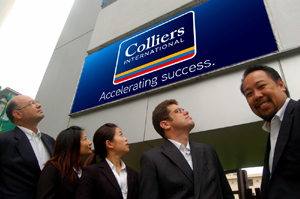Thailand’s Princess Maha Chakri Sirindhorn presided over the inauguration of the third Thai-Lao Friendship Bridge, connecting the northeastern Thai province of Nakhon Phanom with Khammuan province in the central Lao Peoples Democratic Republic.
The opening ceremony took place on Nov 11 at 11.11am at the Thai-Lao border, co-chaired by Bounnhang Vorachith, vice president of the Lao.
Thai Prime Minister Yingluck Shinawatra also attended the event.
Princess Sirindhorn also inaugurated the border pass building where an exhibition on the close ties between the two neighbours is now on display.
Thailand and Laos earlier agreed to jointly develop the economy in border areas under the theme ‘twin city’. The friendship bridge is a part of the Ayeyawady-Chao Phraya-Mekong Economic Cooperation Strategy.
The ‘twin city’ was already effected in two border areas with the opening of two earlier friendship bridges — the first built in 1994 linking Vientiane in Laos to Nong Khai province in Thailand and the second in 2006 linking Mukdahan province in Thailand with Savannakhet in Laos.
The third friendship bridge is part of Asian Highway Route AH15, connecting Thailand’s Udon Thani province to Vinh in Vietnam.
The Thai government funded the construction of the third bridge with a budget of Bt1,723 million (US$57 million), while the Lao government provided land and tax privileges for the import of construction machines and materials.
Built in 2009 by Thai construction company Italian-Thai, the two-lane friendship bridge measures 1.4 kilometres in length and 13 metres in width.
The construction of the Thai-Lao friendship bridge is aimed at enhancing cooperation between the citizens of the two countries, as well as Vietnam, in the economic, social, cultural, trade and investment fields, at the same time bring the people of the region to get closer and a share better quality of life.
Nakhon Phanom governor Rerngsak Mahavinitchaimontree said the bridge will open for public commuters from Saturday with the crossing fee of Bt50 for private cars with less than seven seats, Bt100 for passenger cars of between 7-12 seats, Bt150 for medium-sized passenger cars with 12-24 seats and Bt200 for buses with more than 24 seats.

